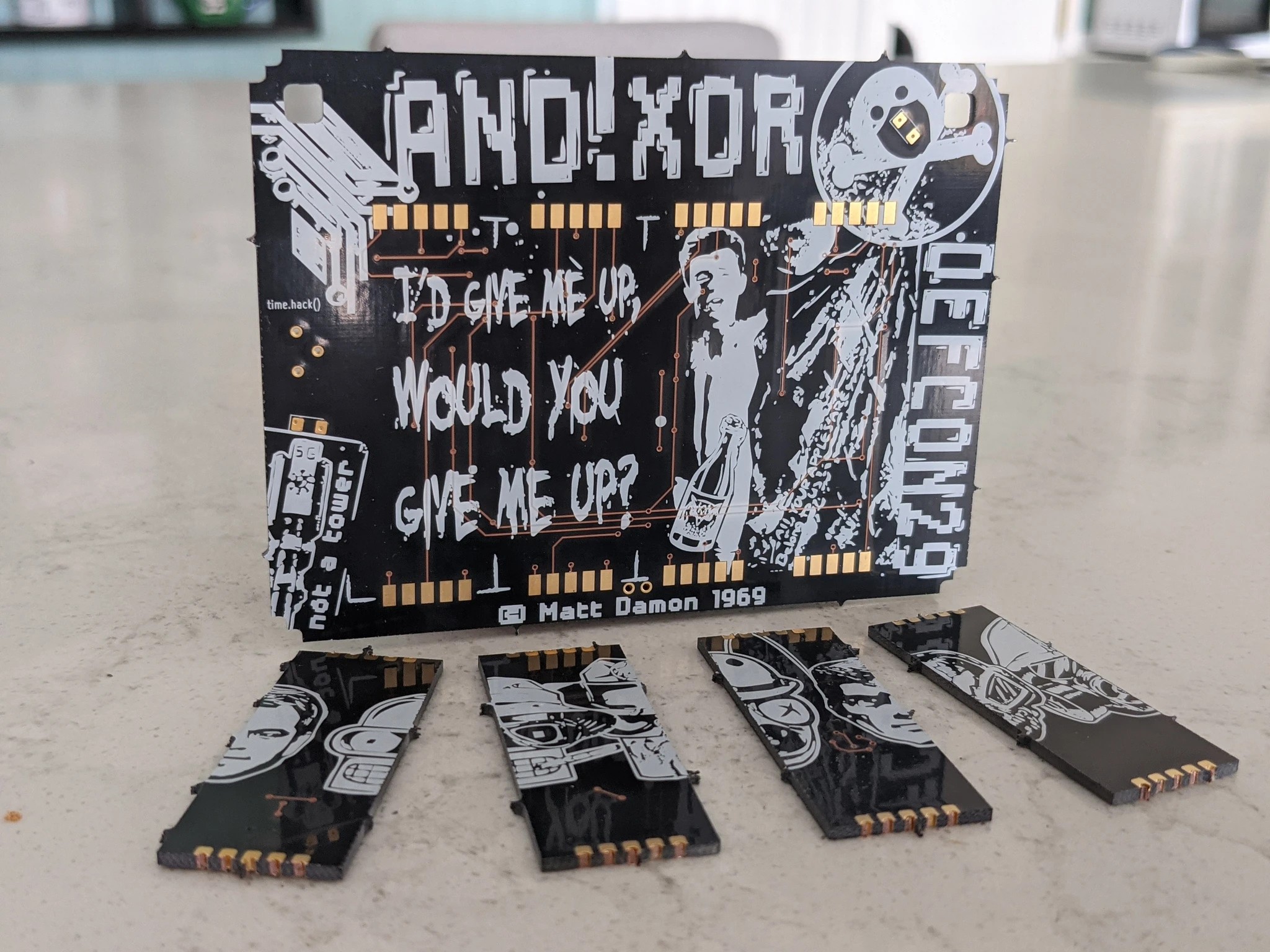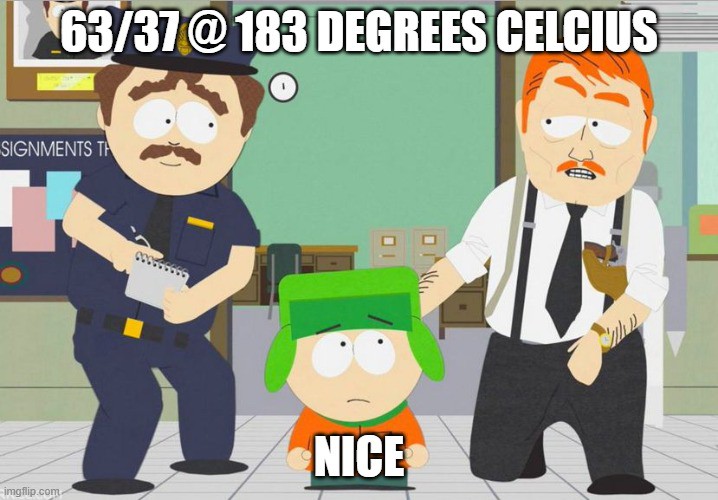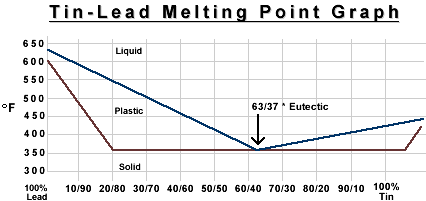
The badge challenge can be broken down in to different levels of difficulty. While we highly encourage you attempt to 100% this, at the very least there can be different levels of satisfaction in whatever floats your boat. If completed, the badge does serve a functional purpose and could be integrated for use in to other hardware hacking projects.
The Facts
- There is no schematic and competent identifiers are encoded with a cipher
- The core badge PCB serves as a backplane
- The artwork on the front PCBs are castellated and include circuit traces
- The passive components must be soldered in addition to the front PCBs
- The component identifiers are printed with silkscreen...in a cipher...how about them apples?
Level 0 - Wear It
You may just be happy earning a badge and want to rock it as is. This challenge involves figuring out how to obtain a badge (via DEF CON hacker shenanigans or Philanthropy), then attaching the lanyard, and wearing it.
Level 1 - Decorative Soldering
Simple soldering. You don't know the correct order of the front face castellated PCBs, but like them placed in a way which artistically makes you happy. Flux and solder them down to the front, forever hiding Buffalo Rick. If you plan on trying to complete the challenge, we DO NOT recommend you do this!
Level 2 - Identification
You have to know the parts, before you figure out where they go. Using a multimeter and/or magnifying glass you correctly identify the kit components and generate your own BOM. Additionally we recommend using the continuity test function and trace out the connections; start drawing a schematic and leave blanks for the unknown components, eventually you will reverse engineer the potential path of electrons.
Helpful Link: SMD Resistor Code Calculator
Level 3 - Crack The Cipher
So normally a soldering kit would give you reference markers for all of the components. What the hell fun is that? This is encoding, not encryption, it is a cipher we have created and you must crack it. This is a great opportunity to learn some new skillsets from our friends at the Crypto & Privacy Village (CPV) if cipher's aren't your thing (or try making friends in our Slack Channel). We have had the cipher tested by some of our CTF Hacker Fam and can confirm it is both solve-able qualitatively or quantitatively. That being said, it doesn't matter if you a left vs right brained kind of person, both paths can lead to success. Just so there is a common frame of reference, here are the cipher symbols in alphabetical order (note that this order is NOT a hint to solving it or indicative of the actual order of the cipher, I just need a way to list it out in the log and do not want to send you down the rabbit hole):
- Apple
- Baseball
- Car
- COVID
- DOGE
- Hammer
- Horseshoe
- New Jersey
- Penguin
- Pizza
- Poker Chip
- Rain Drop
- Rocket Ship
- Tree
- Waves
- Weed
Now it is VERY difficult to solve a cipher without some samples to go off of. You have them silk screened on the badge, but there will be additional logs posted with further hints necessary to crack the cipher (we don't want to mix hints with the general challenge description). Eventually once cracking the cipher go back to the draft schematic you reverse engineered and start translating and populating the unknown components. Note that the hints on the cipher page also will let you know the correct order of the face plates, if permutation trial and error isn't your thing...
Level 4 - Functional Soldering
In an effort to stir debate you may ask why we recommended 63/37 solder? Because other alloy ratios have a range of melting point, but the 63/37 alloy ratio perfectly melts at 183 degrees Celsius (361.4 Degrees Fahrenheit). Can you use any other solder? Of course, we're not the boss of you.


So, at this level you know what you have and where it goes. Time to flux up those pads, tin those tips, and get to soldering! This is where the final steps post component soldering get interesting. You can determine the correct order of the front face castellated PCB's via schematic RE generation and continuity tracing... or you can try all permutations of order with some painters tape before soldering down...or you can use your recently honed cryptography skills to use the intel from those REDACTED messages. Up to you, it's your badge. If everything works, you will get to blinky! A very special and useful blinky...
 Hyr0n
Hyr0n
Discussions
Become a Hackaday.io Member
Create an account to leave a comment. Already have an account? Log In.